Book of Joshua
The Book of Joshua (Hebrew: ספר יהושע Sefer Yehoshua) is the sixth book in the Hebrew Bible and the Christian Old Testament, and is the first book of the Deuteronomistic history, the story of Israel from the conquest of Canaan to the Babylonian exile.[1]:42 It tells of the campaigns of the Israelites in central, southern and northern Canaan, the destruction of their enemies, and the division of the land among the Twelve Tribes, framed by two set-piece speeches, the first by God commanding the conquest of the land, and, at the end, the second by Joshua warning of the need for faithful observance of the Law (torah) revealed to Moses.[2]
 | |||||||||||||||||||||||||||||||||||||||||
| Tanakh (Judaism) | |||||||||||||||||||||||||||||||||||||||||
|---|---|---|---|---|---|---|---|---|---|---|---|---|---|---|---|---|---|---|---|---|---|---|---|---|---|---|---|---|---|---|---|---|---|---|---|---|---|---|---|---|---|
|
|||||||||||||||||||||||||||||||||||||||||
| Old Testament (Christianity) | |||||||||||||||||||||||||||||||||||||||||
|
|||||||||||||||||||||||||||||||||||||||||
| Bible portal | |||||||||||||||||||||||||||||||||||||||||
Almost all scholars agree that the Book of Joshua holds little historical value for early Israel and most likely reflects a much later period.[3] The earliest parts of the book are possibly chapters 2–11, the story of the conquest; these chapters were later incorporated into an early form of Joshua written late in the reign of king Josiah (reigned 640–609 BCE), but the book was not completed until after the fall of Jerusalem to the Neo-Babylonian Empire in 586 BCE, and possibly not until after the return from the Babylonian exile in 539 BCE.[4]:10–11
Contents
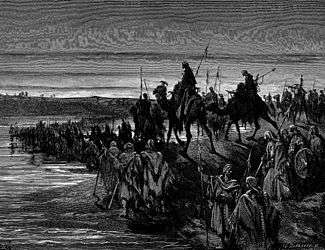
Structure
I. Transfer of leadership to Joshua (1:1–18)
- A. God's commission to Joshua (1:1–9)
- B. Joshua's instructions to the people (1:10–18)
II. Entrance into and conquest of Canaan (2:1–12:24)
- A. Entry into Canaan
- 1.Reconnaissance of Jericho (2:1–24)
- 2. Crossing the River Jordan (3:1–17)
- 3. Establishing a foothold at Gilgal (4:1–5:1)
- 4. Circumcision and Passover (5:2–15)
- B. Victory over Canaan (6:1–12:24)
- 1. Destruction of Jericho (6)
- 2. Failure and success at Ai (7:1–8:29)
- 3. Renewal of the covenant at Mount Ebal (8:30–35)
- 4. Other campaigns in central Canaan. The Gibeonite Deception (9:1–27)
- 5. Campaigns in southern Canaan (10:1–43)
- 6. Campaigns in northern Canaan (11:1–15)
- 7. Summary of lands conquered (11:16-23)
- 8. Summary list of defeated kings (12:1–24)
III. Division of the land among the tribes (13:1–22:34)
- A. God's instructions to Joshua (13:1–7)
- B. Tribal allotments (13:8–19:51)
- 1. Eastern tribes (13:8–33)
- 2. Western tribes (14:1–19:51)
- C. Cities of refuge and levitical cities (20:1–21:42)
- D. Summary of conquest (21:43–45)
- E. De-commissioning of the eastern tribes (22:1–34)
IV. Conclusion (23:1–24:33)
Narrative
God's commission to Joshua (chapter 1)
Chapter 1 commences "after the death of Moses" (Joshua 1:1) and presents the first of three important moments in Joshua marked with major speeches and reflections by the main characters; here first God, and then Joshua, make speeches about the goal of conquest of the Promised Land; in chapter 12, the narrator looks back on the conquest; and in chapter 23 Joshua gives a speech about what must be done if Israel is to live in peace in the land.[5]:49
God commissions Joshua to take possession of the land and warns him to keep faith with the Mosaic covenant. God's speech foreshadows the major themes of the book: the crossing of the Jordan River and conquest of the land, its distribution, and the imperative need for obedience to the Law. Joshua's own immediate obedience is seen in his speeches to the Israelite commanders and to the Transjordanian tribes, and the Transjordanians' affirmation of Joshua's leadership echoes Yahweh's assurances of victory.[6]:175
Entry into the land and conquest (chapters 2–12)
Rahab, a Canaanite woman of the Bible, sets in motion the entrance into Canaan by the Israelites.[7] To avoid repeating failed attempts by Moses to have notable men of Israel predict the success rate of entry into Canaan mentioned in the book of Numbers, Joshua tasks two regular men with entering Jericho as spies. They arrive at Rahab's house and spend the night. The king of Jericho, having heard of possible Israelite spies, demands that Rahab reveal the men. She tells him that she is unaware of their whereabouts, when in reality, she hid them on her roof under flax. The next morning, Rahab professes her faith in God to the men and acknowledges her belief that Canaan was meant for the Israelites to inhabit. Because of Rahab's actions, the Israelites are able to enter Canaan.[7]
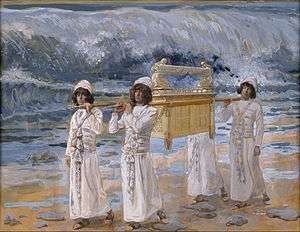
The Israelites cross the Jordan River through a miraculous intervention of God and the Ark of the Covenant and are circumcised at Gibeath-Haaraloth (translated as hill of foreskins), renamed Gilgal in memory. Gilgal sounds like Gallothi, "I have removed", but is more likely to translate as "circle of standing stones". The conquest begins with the battle of Jericho, followed by Ai (central Canaan), after which Joshua builds an altar to Yahweh at Mount Ebal in northern Canaan and renews the Covenant in a ceremony with elements of a divine land-grant ceremony, similar to ceremonies known from Mesopotamia.[6]:180
The narrative then switches to the south. The Gibeonites trick the Israelites into entering an alliance with them by saying that they are not Canaanites. This prevents the Israelites from exterminating them, but they are enslaved instead. An alliance of Amorite kingdoms headed by the Canaanite king of Jerusalem is defeated with Yahweh's miraculous help of stopping the Sun and the Moon, and hurling down large hailstones (Joshua 10:10–14). The enemy kings were eventually hanged on trees. The Deuteronomist author may have used the then-recent 701 BCE campaign of the Assyrian king Sennacherib in the Kingdom of Judah as his model; the hanging of the captured kings is in accordance with Assyrian practice of the 8th century BCE.[8]
With the south conquered the narrative moves to the northern campaign. A powerful multi-national (or more accurately, multi-ethnic) coalition headed by the king of Hazor, the most important northern city, is defeated with Yahweh's help. Hazor itself is then captured and destroyed. Chapter 11:16–23 summarises the extent of the conquest: Joshua has taken the entire land, almost entirely through military victories, with only the Gibeonites agreeing to peaceful terms with Israel. The land then "had rest from war" (Joshua 11:23, repeated at 14:15). Chapter 12 lists the vanquished kings on both sides of the Jordan River: the two kings who ruled east of the Jordan who were defeated under Moses' leadership (Joshua 12:1-6; cf. Numbers 21), and the 31 kings on the west of the Jordan who were defeated under Joshua's leadership (Joshua 12:7–24). The list of the 31 kings is quasi-tabular:
Division of the land (chapters 13–22)
.jpg)
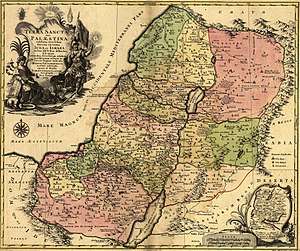
Having described how the Israelites and Joshua have carried out the first of their God's commands, the narrative now turns to the second: to "put the people in possession of the land." Joshua is "old, advanced (or stricken) in years" by this time (Joshua 13:1).
This land distribution is a "covenantal land grant": Yahweh, as king, is issuing each tribe its territory.[6]:183 The "Cities of Refuge" and Levitical cities are attached to the end, since it is necessary for the tribes to receive their grants before they allocate parts of it to others. The Transjordanian tribes are dismissed, affirming their loyalty to Yahweh.
The book reaffirms Moses' allocation of land east of the Jordan to the tribes of Reuben and Gad and the half-tribe of Manasseh (Joshua 13:8–32; cf. Numbers 32:1–42), and then describes how Joshua divided the newly conquered land of Canaan into parcels, and assigned them to the tribes by lot.[10] Joshua 14:1 also makes reference to the role of Eleazar the priest (ahead of Joshua) in the distribution process.[11] The description serves a theological function to show how the promise of the land was realized in the biblical narrative; its origins are unclear, but the descriptions may reflect geographical relations among the places named.[12]:5
The wording of Joshua 18:1-4 suggests that the tribes of Reuben, Gad, Judah, Ephraim and Manasseh received their land allocation some time before the "remaining seven tribes", and a 21-member expedition set out to survey the remainder of the land with a view to organising the allocation to the tribes of Simeon, Benjamin, Asher, Naphtali, Zebulun, Issachar and Dan. Subsequently, 48 cities with their surrounding lands were allocated to the Tribe of Levi (Joshua 21:1-41, cf. Numbers 35:7).
Omitted in the Masoretic Text, but present in the Septuagint, is a statement that:
Joshua completed the division of the land in its boundaries, and the children gave a portion to Joshua, by the commandment of the Lord. They gave to him the city for which he asked, Thamnath Sarach gave they him in Mount Ephraim, and Joshua built the city, and dwelt in it. And Joshua took the stone knives with which he had circumcised the children of Israel, which were in the way in the wilderness, and he placed them in Tamnath Sarach.[13]
By the end of chapter 21, the narrative records that the fulfilment of God's promise of land, rest and supremacy over the enemies of the Israelites was complete (Joshua 21:43–45). The tribes to whom Moses had granted land east of the Jordan are authorized to return home to Gilead (here used in the widest sense for the whole Transjordan district),[14] having faithfully 'kept the charge' (Joshua 22:3, English Revised Version) of supporting the tribes occupying Canaan. They are granted "riches… with very much livestock, with silver, with gold, with bronze, with iron, and with very much clothing" as a reward (Joshua 22:1–9).
Joshua's farewell speeches (chapters 23–24)
Joshua, in his old age and conscious that he is "going the way of all the earth" (Joshua 23:14), gathers the leaders of the Israelites together and reminds them of Yahweh's great works for them, and of the need to love Yahweh (Joshua 23:11). The Israelites are told – just as Joshua himself had been told (Joshua 1:7) – that they must comply with "all that is written in the Book of the Law of Moses" (Joshua 23:6), neither "turn[ing] aside from it to the right hand or to the left" (i.e. by adding to the law, or diminishing from it).[15]
Joshua meets again with all the people at Shechem in chapter 24 and addresses them a second time. He recounts the history of God's formation of the Israelite nation, beginning with "Terah, the father of Abraham and Nahor, [who] lived beyond the Euphrates River and worshiped other gods" (Joshua 24:2). He invited the Israelites to choose between serving the Lord who had delivered them from Egypt, or the gods which their ancestors had served on the other side of the Euphrates, or the gods of the Amorites in whose land they now lived. The people chose to serve the Lord, a decision which Joshua recorded in the Book of the Law of God. He then erected a memorial stone "under the oak that was by the sanctuary of the Lord" in Shechem (Joshua 24:1-27). The oak is associated with the Oak of Moreh where Abram had set up camp during his travels in this area (Genesis 12:6). Thus "Joshua made a covenant with the people", literally "cut a covenant", a phrase common to the Hebrew, Greek, and Latin languages. It derives from the custom of sacrifice, in which the victims were cut in pieces and offered to the deity invoked in ratification of the engagement.[16]
The people then returned to their inheritance i.e. their allocated lands (Joshua 24:28).
Closing items
The Book of Joshua closes with three concluding items (referred to in the Jerusalem Bible as "Two Additions"):[17]
- The death of Joshua and his burial at Timnath-serah (Joshua 24:29–31)
- The burial of the bones of Joseph at Shechem (Joshua 24:32)
- The death of Eleazar and his burial in land belonging to Phinehas in the mountains of Ephraim (Joshua 24:33).
There were no Levitical cities given to the descendants of Aaron in Ephraim, so theologians Carl Friedrich Keil and Franz Delitzsch supposed the land may have been at Geba in the territory of the Tribe of Benjamin: "the situation, 'upon the mountains of Ephraim', is not at variance with this view, as these mountains extended, according to Judges 4:5, etc., far into the territory of Benjamin".[18]
In some manuscripts and editions of the Septuagint, there is an additional verse relating to the apostasy of the Israelites after Joshua's death.
Composition
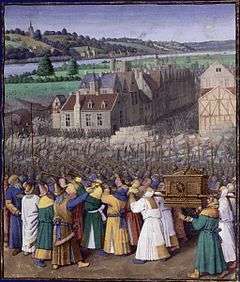
Authorship and date
The Book of Joshua is an anonymous work. The Babylonian Talmud, written in the 3rd to 5th centuries CE, attributed it to Joshua himself, but this idea was rejected as untenable by John Calvin (1509–64), and by the time of Thomas Hobbes (1588–1679) it was recognised that the book must have been written much later than the period it depicted.[5]:26–30 There is now general agreement that it was composed as part of a larger work, the Deuteronomistic history, stretching from the Book of Deuteronomy to the Books of Kings,[6]:174 composed first at the court of king Josiah in the late 7th century BCE, and extensively revised in the 6th century BCE.[5]:63
Historicity
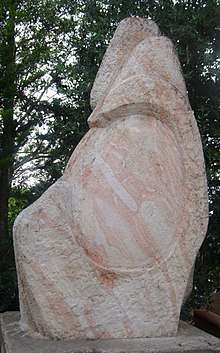
The prevailing scholarly view is that Joshua is not a factual account of historical events.[19][20]:4 The apparent setting of Joshua is the 13th century BCE[20] which was a time of widespread city-destruction, but with a few exceptions (Hazor, Lachish) the destroyed cities are not the ones the Bible associates with Joshua, and the ones it does associate with him show little or no sign of even being occupied at the time.[21]:71–72 Given its lack of historicity, Carolyn Pressler in her commentary for the Westminster Bible Companion series suggests that readers of Joshua should give priority to its theological message ("what passages teach about God") and be aware of what these would have meant to audiences in the 7th and 6th centuries BCE.[22]:5–6 Richard Nelson explained that the needs of the centralised monarchy favoured a single story of origins, combining old traditions of an exodus from Egypt, belief in a national god as "divine warrior," and explanations for ruined cities, social stratification and ethnic groups, and contemporary tribes.[23]:5
In the 1930s Martin Noth made a sweeping criticism of the usefulness of the Book of Joshua for history.[24] Noth was a student of Albrecht Alt, who emphasized form criticism and the importance of etiology.[24][25] Alt and Noth posited a peaceful movement of the Israelites into various areas of Canaan, contra the Biblical account.[26]
Albright questioned the "tenacity" of etiologies, which were key to Noth's analysis of the campaigns in Joshua. Archaeological evidence in the 1930s showed that the city of Ai, an early target for conquest in the putative Joshua account, had existed and been destroyed, but in the 22nd century BCE.[24] Some alternate sites for Ai have been proposed which would partially resolve the discrepancy in dates, but these sites have not been widely accepted.[27] In 1951 Kathleen Kenyon showed that Jericho was from the Middle Bronze Age (c. 2100–1550 BCE), not the Late Bronze Age (c. 1550–1200 BCE). Kenyon argued that the early Israelite campaign could not be historically corroborated, but rather explained as an etiology of the location and a representation of the Israelite settlement.[28][29]
In 1955, G. Ernest Wright discussed the correlation of archaeological data to the early Israelite campaigns, which he divided into three phases per the Book of Joshua. He pointed to two sets of archaeological findings that "seem to suggest that the biblical account is in general correct regarding the nature of the late thirteenth and twelfth-eleventh centuries in the country" (i.e., "a period of tremendous violence").[30] He gives particular weight to what were then recent digs at Hazor by Yigael Yadin.[30]
As an alternative to both the military conquest and uncontested infiltration hypotheses, George Mendenhall and Norman Gottwald suggested that the Israelites emerged through a kind of peasant revolt against their Canaanite lords. Arguing against this view Gary A. Rendsburg says that archaeological findings (presented by Israel Finkelstein in 1986) undermined this idea because the Israelites' first settled areas were not held by Canaanites, whose cities were sustained alongside Israelite areas.[26]
The Book of Joshua holds little historical value.[3] The archaeological evidence shows that Jericho and Ai were not occupied in the Near Eastern Late Bronze Age.[31] The story of the conquest most likely represents the nationalist propaganda of the 8th century BCE kings of Judah and their claims to the territory of the Kingdom of Israel;[19] incorporated into an early form of Joshua written late in the reign of king Josiah (reigned 640–609 BCE). The book was probably revised and completed after the fall of Jerusalem to the Neo-Babylonian Empire in 586 BCE, and possibly after the return from the Babylonian exile in 538 BCE.[4]:10–11
Themes
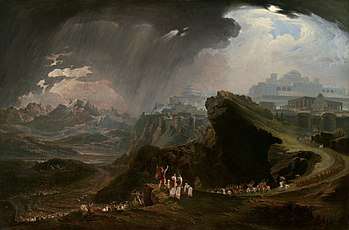
Faith and wrath
The overarching theological theme of the Deuteronomistic history is faithfulness and God's mercy, and their opposites, faithlessness and God's wrath. In the Book of Judges, the Books of Samuel, and the Books of Kings, the Israelites become faithless and God ultimately shows his anger by sending his people into exile.[32] But in Joshua Israel is obedient, Joshua is faithful, and God fulfills his promise and gives them the land.[22]:3–4 Yahweh's war campaign in Canaan validates Israel's entitlement to the land[33]:158–159 and provides a paradigm of how Israel was to live there: twelve tribes, with a designated leader, united by covenant in warfare and in worship of Yahweh alone at a single sanctuary, all in obedience to the commands of Moses as found in the Book of Deuteronomy.[34]:162
God and Israel
The Book of Joshua takes forward Deuteronomy's theme of Israel as a single people worshipping Yahweh in the land God has given them.[33]:159 Yahweh, as the main character in the book, takes the initiative in conquering the land, and Yahweh's power wins the battles. For example, the walls of Jericho fall because Yahweh fights for Israel, not because the Israelites show superior fighting ability.[4]:7–8 The potential disunity of Israel is a constant theme, the greatest threat of disunity coming from the tribes east of the Jordan. Chapter 22:19 even hints that the land across the Jordan is unclean and that the tribes who live there have secondary status.[4]:9
Land
Land is the central topic of Joshua.[20]:11 The introduction to Deuteronomy recalled how Yahweh had given the land to the Israelites but then withdrew the gift when Israel showed fear and only Joshua and Caleb had trusted in God.[35]:33 The land is Yahweh's to give or withhold, and the fact that he has promised it to Israel gives Israel an inalienable right to take it. For exilic and post-exilic readers, the land was both the sign of Yahweh's faithfulness and Israel's unfaithfulness, as well as the centre of their ethnic identity. In Deuteronomistic theology, "rest" meant Israel's unthreatened possession of the land, the achievement of which began with the conquests of Joshua.[23]:15–16
The enemy
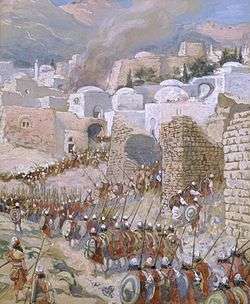
Joshua "carries out a systematic campaign against the civilians of Canaan — men, women and children — that amounts to genocide."[36] In doing this he is carrying out herem as commanded by Yahweh in Deuteronomy 20:17: "You shall not leave alive anything that breathes". The purpose is to drive out and dispossess the Canaanites, with the implication that there are to be no treaties with the enemy, no mercy, and no intermarriage.[6]:175 "The extermination of the nations glorifies Yahweh as a warrior and promotes Israel's claim to the land," while their continued survival "explores the themes of disobedience and penalty and looks forward to the story told in Judges and Kings."[23]:18–19 The divine call for massacre at Jericho and elsewhere can be explained in terms of cultural norms (Israel was not the only Iron Age state to practice herem) and theology (a measure to ensure Israel's purity as well as the fulfillment of God's promise),[6]:175 but Patrick D. Miller in his commentary on Deuteronomy remarks, "there is no real way to make such reports palatable to the hearts and minds of contemporary readers and believers."[35]:40–41
Obedience
Obedience versus disobedience is a constant theme of the work.[37]:79 Obedience ties in the Jordan crossing, the defeat of Jericho and Ai, circumcision and Passover, and the public display and reading of the Law. Disobedience appears in the story of Achan (stoned for violating the herem command), the Gibeonites, and the altar built by the Transjordan tribes. Joshua's two final addresses challenge the Israel of the future (the readers of the story) to obey the most important command of all, to worship Yahweh and no other gods. Joshua thus illustrates the central Deuteronomistic message, that obedience leads to success and disobedience to ruin.[23]:20
Moses, Joshua and Josiah
The Deuteronomistic history draws parallels in proper leadership between Moses, Joshua and Josiah.[23]:102 God's commission to Joshua in chapter 1 is framed as a royal installation. The people's pledge of loyalty to Joshua as the successor of Moses recalls royal practices. The covenant-renewal ceremony led by Joshua was the prerogative of the kings of Judah. God's command to Joshua to meditate on the "book of the law" day and night parallels the description of Josiah in 2 Kings 23:25 as a king uniquely concerned with the study of the law. The two figures had identical territorial goals; Josiah died in 609 BCE while attempting to annex the former Israel to his own kingdom of Judah.[38]
Some of the parallels with Moses can be seen in the following, and not exhaustive, list:[6]:174
- Joshua sent spies to scout out the land near Jericho (2:1), just as Moses sent spies from the wilderness to scout out the Promised Land (Num. 13; Deut. 1:19–25).
- Joshua led the Israelites out of the wilderness into the Promised Land, crossing the Jordan River as if on dry ground (3:16), just as Moses led the Israelites out of Egypt through the Red Sea, which they crossed as if on dry land (Ex. 14:22).
- After crossing the Jordan River, the Israelites celebrated the Passover (5:10–12) just as they did immediately before the Exodus (Exodus 12).
- Joshua's vision of the "commander of Yahweh's army" (5:13–15) is reminiscent of the divine revelation to Moses in the burning bush (Ex. 3:1–6).
- Joshua successfully intercedes on behalf of the Israelites when Yahweh is angry for their failure to fully observe the "ban" (herem), just as Moses frequently persuaded God not to punish the people (Ex. 32:11–14, Num. 11:2, 14:13–19).
- Joshua and the Israelites were able to defeat the people at Ai because Joshua followed the divine instruction to extend his sword (Josh 8:18), just as the people were able to defeat the Amalekites as long as Moses extended his hand that held the staff of God (Ex. 17:8–13).
- Joshua is "old, advanced in years (13:1) at the time when the Israelites can begin to settle on the promised land, just as Moses was old when he died having seen, but not entered, the Promised Land (Deuteronomy 34:7)
- Joshua served as the mediator of the renewed covenant between Yahweh and Israel at Shechem (8:30–35; 24), just as Moses was the mediator of Yahweh's covenant with the people at Mount Sinai/Mount Horeb.
- Before his death, Joshua delivered a farewell address to the Israelites (23–24), just as Moses had delivered his farewell address (Deuteronomy 32–33).
- Moses lived to be 120 (Deuteronomy 34:7) and Joshua lived to be 110 (Joshua 24:29).
Moral and political interpretations
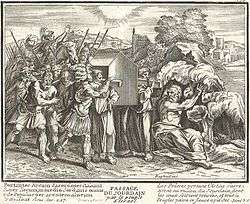
Joshua has become an iconic figure for the Jewish Zionist movement,[39] and many Israeli settlements sit on land taken by force from Palestinians.[40] David Ben-Gurion saw in the war narrative of Joshua an ideal basis for a unifying national myth for his new State of Israel, framed against a common enemy, the Arabs.[41] He met with politicians and scholars such as Bible scholar Shemaryahu Talmon to discuss Joshua's supposed conquests and later published a book of the meeting transcripts; in a lecture at Ben-Gurion's home, archaeologist Yigael Yadin argued for the historicity of the Israelite military campaign pointing to the conquests of Hazor, Bethel, and Lachish.[41] Zionism thus presented the 1948 war (the war which saw the creation of the State of Israel) as a "miraculous" clearing of the land based on Joshua, and the Bible as a mandate for the expulsion of the Palestinians.[42]
By the same token, the Biblical narrative of conquest has been used as an apparatus of critique against Zionism. For example, Michael Prior criticizes the use of the campaign in Joshua to favor "colonial enterprises" (in general, not only Zionism) and have been interpreted as validating ethnic cleansing. He asserts that the Bible was used to make the treatment of Palestinians more palatable morally.[43] A related moral condemnation can be seen in "The political sacralization of imperial genocide: contextualizing Timothy Dwight's The Conquest of Canaan" by Bill Templer.[44] This kind of critique is not new; Jonathan Boyarin notes how Frederick W. Turner blamed Israel's monotheism for the very idea of genocide, which Boyarin found "simplistic" yet with precedents.[45]
See also
- The Bible Unearthed
- "The Bible's Buried Secrets"
- Ed (biblical reference)
- Transjordan (Bible)
- Yom HaAliyah
References
- McNutt, Paula (1999). Reconstructing the Society of Ancient Israel. Westminster John Knox Press. ISBN 978-0-66422265-9.
- Achtemeier, Paul J; Boraas, Roger S (1996). The Harper Collins Bible Dictionary. Harper San Francisco. ISBN 978-0-06060037-2.
- Killebrew 2005, p. 152: "Almost without exception, scholars agree that the account in Joshua holds little historical value vis-à-vis early Israel and most likely reflects much later historical times.15"
- Creach, Jerome F.D. (2003). Joshua. Westminster John Knox Press. ISBN 978-0-66423738-7.
- De Pury, Albert; Romer, Thomas (2000). "Deuteronomistic Historiography (DH): History of Research and Debated Issues". In de Pury, Albert; Romer, Thomas; Macchi, Jean-Daniel (eds.). Israel Constructs its History: Deuteronomistic Historiography in Recent Research. Sheffield Academic Press. ISBN 978-0-56722415-6.
- Younger, K. Lawson Jr (2003). "Joshua". In Dunn, James D.G.; Rogerson, John William (eds.). Eerdmans Commentary on the Bible. Eerdmans. ISBN 978-0-80283711-0.
- Frymer-Kensky, Tikva Simone. (2002). Reading the women of the Bible (1st ed.). New York: Schocken Books. ISBN 978-0-8052-4121-1. OCLC 49823086.
- Na'aman, Nadav (2005). Ancient Israel and Its Neighbors: Collected Essays. 2. Eisenbrauns. p. 378. ISBN 978-1-57506113-9.
- Nordenskiöld, Adolf Erik (1889). Facsimile-atlas to the Early History of Cartography: With Reproductions of the Most Important Maps Printed in the XV and XVI Centuries. Kraus. pp. 51, 64 – via Google books.
- Hirsch, Emil G. (1906). "Joshua, Book of". Jewish Encyclopedia.
- Maclear, G. F. (1897). Joshua 14 in The Cambridge Bible for Schools and Colleges. Cambridge University Press – via BibleHub.
- Dorsey, David A. (1991). The Roads and Highways of Ancient Israel. Johns Hopkins University Press. ISBN 978-0-8018-3898-9.
- Spence-Jones, HDM; Exell, Joseph S., eds. (1919). "Joshua 21". Pulpit Commentary. Bible Hub.
- Barnes, Albert (1834). Notes on the Bible: Joshua 22. Bible Hub.
- Poole, Matthew (1853). "Joshua 23". Commentary on the Holy Bible. Robert Carter & Bros. – via Bible Hub.
- Spence-Jones, HDM; Exell, Joseph S., eds. (1919). "Joshua 24". Pulpit Commentary. BibleHub.
- Jerusalem Bible, heading of Joshua 24:29–33
- Keil, Carl Friedrich; Delitzsch, Franz (1878). Biblical Commentary on the Old Testament: Joshua 24. BibleHub.
- Coote, Robert B. (2000). "Conquest: Biblical narrative". In Freedman, David Noel; Myers, Allen C. (eds.). Eerdmans Dictionary of the Bible. Eerdmans. p. 275. ISBN 978-905356503-2.
- McConville, Gordon; Williams, Stephen (2010). Joshua. Eerdmans. ISBN 978-0-80282702-9.
- Miller, James Maxwell; Hayes, John Haralson (1986). A History of Ancient Israel and Judah. Westminster John Knox Press. ISBN 0-664-21262-X.
- Pressler, Carolyn (2002). Joshua, Judges and Ruth. Westminster John Knox Press. ISBN 978-0-66425526-8.
- Nelson, Richard D (1997). Joshua. Westminster John Knox Press. ISBN 978-0-66422666-4.
- Albright, W. F. (1939). "The Israelite Conquest of Canaan in the Light of Archaeology". Bulletin of the American Schools of Oriental Research. 74 (74): 11–23. doi:10.2307/3218878. JSTOR 3218878.
- Noort, Ed. 1998. "4QJOSHª and the History of Tradition in the Book of Joshua," Journal of Northwest Semitic Languages, 24 (2): 127–44.
- Rendsburg, Gary A. (1992). "The Date of the Exodus and the Conquest/Settlement: The Case for the 1100S". Vetus Testamentum. 42 (4): 510–27. doi:10.2307/1518961. JSTOR 1518961.
- Hawkins, Ralph (2015). How Israel Became a People. Abingdon. p. 109. ISBN 978-1-42675487-6. Retrieved 26 January 2017.
- Kenyon, Kathleen M. (1967). "Jericho". Archaeology. 20 (4): 268–275. JSTOR 41667764.
- Kenyon, Kathleen M. (20 November 2013). "Some Notes on the History of Jericho in the Second Millennium B.C.". Palestine Exploration Quarterly. 83 (2): 101–38. doi:10.1179/peq.1951.83.2.101.
- Wright, G. Ernest (1955). "Archaeological News and Views: Hazor and the Conquest of Canaan". The Biblical Archaeologist. 18 (4): 106–8. doi:10.2307/3209136. JSTOR 3209136.
- Bartlett, John R. (2006). "3: Archeology". In Rogerson, J.W.; Lieu, Judith M. (eds.). The Oxford Handbook of Biblical Studies. Oxford: Oxford University Press. p. 63. ISBN 978-0-19925425-5.
- Laffey, Alice L (2007). "Deuteronomistic history". In Orlando O. Espín; James B. Nickoloff (eds.). An introductory dictionary of theology and religious studies. Liturgical Press. ISBN 9780814658567.
- McConville, Gordon (2001). "Joshua". In John Barton; John Muddiman (eds.). Oxford Bible Commentary. Oxford University Press. ISBN 9780198755005.
- Coogan, Michael D. (2009). A Brief Introduction to the Old Testament. Oxford University Press.
- Miller, Patrick D (1990). Deuteronomy. Cambridge University Press. ISBN 9780664237370.
- Dever, William (2003). Who Were the Early Israelites and Where Did They Come From?. Eerdmans. p. 38. ISBN 9780802809759.
- Curtis, Adrian H.W (1998). Joshua. Sheffield Academic Press. ISBN 9781850757061.
- Finkelstein, Israel; Silberman, Neil Asher (2001). The Bible Unearthed. Free Press. p. 95. ISBN 978-0-74322338-6.
- Farber 2016.
- Gordon & Gordon 2012, p. 136.
- Havrelock 2013.
- Masalha 2014.
- Prior, Michael (2002). "Ethnic Cleansing and the Bible: A Moral Critique". Journal of Holy Land and Palestine Studies. 1 (1): 37–59. doi:10.3366/hls.2002.0003.
- Templer, Bill (1 December 2006). "The political sacralization of imperial genocide: contextualizing Timothy Dwight's The Conquest of Canaan". Postcolonial Studies: Culture, Politics, Economy. 9 (4): 358–91. doi:10.1080/13688790600993230.
- Boyarin, Jonathan (1996). "2: Reading Exodus into History". Palestine and Jewish History: Criticism at the Borders of Ethnography. University of Minnesota Press. p. 42. ISBN 978-1-45290029-2.
Bibliography
- Briggs, Peter sr. (2005). "Testing the Factuality of the Conquest of Ai Narrative in the Book of Joshua". In Carnagey, Glenn A.; Carnagey, Glenn jr.; Schoville, Keith N. (eds.). Beyond the Jordan: Studies in Honor of W. Harold Mare. Wipf & Stock. pp. 157–96. ISBN 978-1-59752069-0.
- Bright, John (2000). A History of Israel (4th ed.). Westminster John Knox Press. ISBN 978-0-66422068-6.
- Bruins, Hendrik J.; van der Plicht, Johannes (1995). "Tell Es-Sultan (Jericho): Radiocarbon Results…" (PDF). Radiocarbon. 37 (2): 213–20. doi:10.1017/S0033822200030666.CS1 maint: ref=harv (link)
- Campbell, Anthony F (1994). "Martin Noth and the Deuteronomistic History". In McKenzie, Steven L.; Graham, Matt Patrick (eds.). The history of Israel's traditions: the heritage of Martin Noth. Sheffield Academic Press. ISBN 978-0-56723035-5.
- ———; O'Brien, Mark (2000). Unfolding the Deuteronomistic history: origins, upgrades, present text. Fortress Press. ISBN 978-1-45141368-7.
- Day, John (2002). Yahweh and the Gods and Goddesses of Canaan. Sheffield Academic Press. ISBN 978-0-82646830-7.
- den Braber, Marieke; Wesselius, Jan-Wim (November 2008). "The Unity of Joshua 1–8, its Relation to the Story of King Keret, and the Literary Background to the Exodus and Conquest Stories". Scandinavian Journal of the Old Testament. 22 (2): 253–74. doi:10.1080/09018320802661218.
- Farber, Zev (2016). Images of Joshua in the Bible and Their Reception. Walter de Gruyter. ISBN 9783110383669.CS1 maint: ref=harv (link)
- Gordon, Rivca; Gordon, Haim (2012). Existentialist Themes and Education. Waxmann. ISBN 9783830977520.CS1 maint: ref=harv (link)
- Gyémánt, Ladislau (2003). "Historiographic Views on the Settlement of the Jewish Tribes in Canaan". Sacra Scripta. I (1): 26–30. ISSN 1584-7624.
- Harstad, Adolph L. (2005). Joshua. Saint Louis, MO: Concordia Pub. House. ISBN 978-0-570-06319-3.
- Havrelock, Rachel (2013). "The Joshua Generation: Conquest and the Promised Land". Critical Research on Religion. 1 (3): 309. doi:10.1177/2050303213506473.
- Hawk, L. Daniel (13 March 2012). "The Truth about Conquest: Joshua as History, Narrative, and Scripture". Interpretation: A Journal of Bible and Theology. 66 (2): 129–40. doi:10.1177/0020964311434872.
- Hess, Richard S. (2008). "The Jericho and Ai of the Book of Joshua". In Hess, Richard S.; Klingbeil, Gerald A.; Ray, Jr, Paul J. (eds.). Critical issues in early Israelite history. Winona Lake, IN: Eisenbrauns. pp. 33–46. ISBN 978-1-57506804-6.
- Jacobs, Paul F. (2000). "Jericho". In Freedman, David Noel; Myers, Allen C. (eds.). Eerdmans Dictionary of the Bible. Eerdmans. ISBN 978-9-05356503-2.CS1 maint: ref=harv (link)
- Japhet, Sara (1979). "Conquest and Settlement in Chronicles". Journal of Biblical Literature. 98 (2): 205–18. doi:10.2307/3265510. JSTOR 3265510.
- Killebrew, Ann E. (2005). Biblical Peoples and Ethnicity: An Archaeological Study of Egyptians, Canaanites, and Early Israel, 1300–1100 B.C.E. Society of Biblical Literature. ISBN 978-1-58983097-4.CS1 maint: ref=harv (link)
- Masalha, Nur (2014). The Zionist Bible: Biblical Precedent, Colonialism and the Erasure of Memory. Routledge. ISBN 9781317544654.CS1 maint: ref=harv (link)
- Mendenhall, George E. (1962). "The Hebrew Conquest of Palestine". The Biblical Archaeologist. 25 (3): 66–87. doi:10.2307/3210957. JSTOR 3210957.
- Moore, Megan Bishop; Kelle, Brad E. (2011). Biblical History and Israel's Past. Eerdmans. ISBN 978-0-80286260-0.CS1 maint: ref=harv (link)
- Paton, Lewis Bayles (1913). "Israel's Conquest of Canaan: Presidential Address at the Annual Meeting, Dec. 27, 1912". Journal of Biblical Literature. 32 (1): 1–53. doi:10.2307/3259319. JSTOR 3259319. S2CID 165671881.
- Pienaar, Daan (1 January 2004). "Some observations on conquest reports in the Book of Joshua". Journal of Northwest Semitic Languages. 30 (1). hdl:10520/EJC101285. ISSN 0259-0131.
- Prior, Michael (September 2002). "Ethnic Cleansing and the Bible: A Moral Critique". Holy Land Studies. 1 (1): 37–59. doi:10.3366/hls.2002.0003.
- Thompson, Leonard L. (1981). "The Jordan Crossing: ?idqot Yahweh and World Building". Journal of Biblical Literature. 100 (3): 343–58. doi:10.2307/3265959. JSTOR 3265959.
- Van Seters, John (January 1990). "Joshua's campaign of Canaan and near eastern historiography". Scandinavian Journal of the Old Testament. 4 (2): 1–12. doi:10.1080/09018329008584943.
- Van Seters, John (2000). "The Deuteronomist from Joshua to Samuel". In Knoppers, Gary N.; McConville, J. Gordon (eds.). Reconsidering Israel and Judah: Recent Studies on the Deuteronomistic History. Eisenbrauns. ISBN 978-1-57506037-8.
- Wazana, Nili (2014). "Chapter 1: "Everything Was Fulfilled" versus "The Land That Yet Remains"". In Berthelot, Katell; David, Joseph E.; Hirshman, Marc (eds.). The gift of the land and the fate of the Canaanites in Jewish thought. Oxford University press. pp. 13–35. ISBN 978-0-19995982-2.
- Wenham, Gordon J. (1971). "The Deuteronomic Theology of the Book of Joshua". Journal of Biblical Literature. 90 (2): 140–48. doi:10.2307/3263755. JSTOR 3263755. S2CID 17518822.
- Wood, W. Carleton (1916). "The Religion of Canaan: From the Earliest Times to the Hebrew Conquest (Concluded)". Journal of Biblical Literature. 35 (3/4): 163–279. doi:10.2307/3259942. JSTOR 3259942.
- Zevit, Ziony (1983). "Archaeological and Literary Stratigraphy in Joshua 7–8". Bulletin of the American Schools of Oriental Research. 251 (251): 23–35. doi:10.2307/1356824. JSTOR 1356824.
External links
| Wikisource has original text related to this article: |
| Wikimedia Commons has media related to Book of Joshua. |
- Hebrew and English text:
- יְהוֹשֻׁעַ Yehoshua–Joshua (Hebrew–English at Mechon-Mamre.org, Jewish Publication Society translation)
- Jewish translations:
- Joshua (Judaica Press) translation with Rashi's commentary at chabad.org
- Christian translations
- Online Bible at GospelHall.org
- Joshua at Wikisource (Authorised King James Version)

Book of Joshua | ||
| Preceded by Deuteronomy |
Hebrew Bible | Succeeded by Judges |
| Christian Old Testament | ||